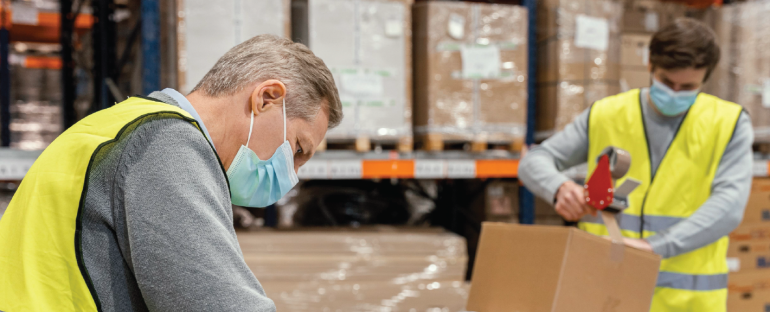Due to the SARS-CoV-2 virus outbreak, employers have been required to take many additional measures to maintain workplace health and safety to minimise the risk of workers being exposed to SARS-CoV-2 infection at work. So what obligations do employers have to meet in relation to determining occupational risk in 2021? What should an occupational risk analysis based on the risk of SARS-CoV-2 infection consider?
The employer is obliged to protect the health and life of their workers by ensuring safe and hygienic working conditions with appropriate use of the achievements of science and technology, in accordance with the provisions of Article 207 § 2 and Article 304 of the Labour Code Act in relation to workers employed on the basis of an employment relationship, as well as in relation to natural persons performing work on a basis other than an employment relationship or self-employed in the workplace or in the place indicated by the employer.
With regard to occupational risks, the employer assesses and documents the occupational risks related to the work performed and applies the necessary preventive measures to reduce the risks. Occupational risk is understood as the likelihood of undesirable work-related events resulting in losses, in particular the occurrence of adverse health effects in workers as a result of occupational hazards in the working environment or the way the work is carried out.
The employer implements the obligation to ensure occupational health and safety for employees, in particular by preventing occupational hazards, organising work properly, applying the necessary preventive measures and informing and training employees. The amendments obliged employers to update the occupational risk assessment to which an employee is or may be exposed, prepared before the date of entry into force of the amendment, taking into account the classification and list of harmful biological agents set out in Annex 1 to the above-mentioned Regulation:
a) as regards Severe Acute Respiratory Syndrome-2 Coronavirus (SARS-CoV-2), within 30 days of the entry into force of this Regulation, namely by 29 January 2021
b) for the remainder, until 20 November 2021;
The risk associated with the possibility of a worker contracting COVID-19, may be due to the fact that:
– arises from the specific nature of the duties and the specific nature of the business the employer is involved in carrying out a specific work process,
– results from the general epidemiological conditions prevailing at specific times.
As far as the first type of work is concerned, these are all jobs specified in Annex No. 2 “List of jobs exposing workers to biological agents” to the Regulation of the Minister of Health of 22 April 2005 on biological agents harmful to health in the workplace and health protection of workers occupationally exposed to such agents. According to this annex, such jobs are, for example, in food production plants, agriculture or laboratories or health services. For those jobs where this factor is present, it is important to consider the type of work the worker is doing, e.g. working in hospitals with COVID-19 patients or working in laboratories on research related to sample analysis.
In this regard, after such an analysis, the employer shall create a list of work in connection with which there is contact with SARS-CoV-2. The risk assessment in this situation consists of a description of the work process where contact with the virus may occur, divided into work steps, which should be clearly and specifically indicated by the employer by job function.
On the other hand, with regard to the types of work that are not specified in the aforementioned Annex No. 2 to the Regulation of the Minister of Health of 22 April 2005 on biological factors harmful to health in the workplace and health protection of workers professionally exposed to such factors, the risk related to SARS-CoV-2 in such situations, contact with the virus usually occurs in connection with interpersonal contacts, e.g. contact with a person suffering from SARS-CoV-2 through meetings with clients, petitioners, training sessions or conferences. Therefore, in this case we are not talking about exposure resulting from the measured use of a biological agent in the work process, but exposure related to the epidemiological situation existing in a specific place and time.




